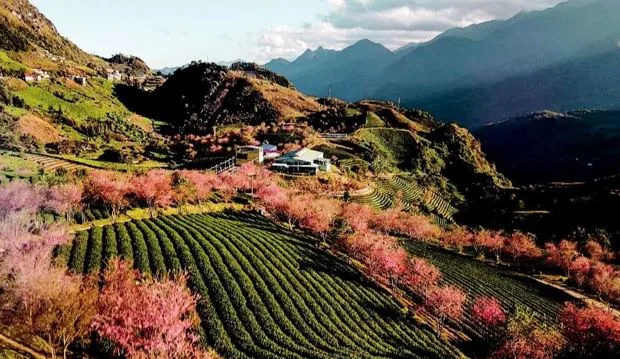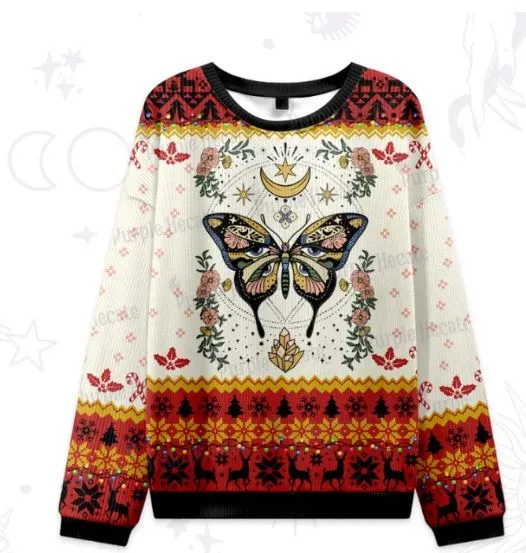Northern Vietnam Seasons: Best Time to Visit & Weather Travel Guide
Northern Vietnam is a region of misty mountain ranges, golden rice terraces, emerald waters, and deep-rooted culture. If you’re dreaming about Vlietnam Travel but wondering when to go, you’re in the right place. Let’s break it down-season by season-with insights that go beyond weather forecasts
Understanding the Seasons: Northern Vietnam 101
Spring (February–April): Blossoms, Breezes, and New Beginnings
Spring is refreshingly cool with light drizzles that gently touch the northern highlands. Temperatures range from 15°C to 25°C. During this time, nature blooms beautifully as cities like Hanoi shed their winter calm. Early festivals and vibrant flower markets begin to color the streets. If you enjoy light trekking or peaceful boat rides, this is your perfect season. Plum and apricot blossoms cover the hillsides like a soft blanket. Everything in the north feels like it’s slowly waking up. The energy is quiet yet full of optimism.
Top Experiences in Spring:
- Hike among flowering hills in Moc Chau
- Take a boat ride through Ninh Bình’s limestone karsts
- Wander Hanoi’s West Lake under blooming trees
Moreover, spring lets you explore without the rush of peak tourism. That means a quieter and more personal travel experience. Trails feel open and landscapes breathe with space. Though the days are gentle, the impressions last.
Summer (May-August): Lush Landscapes and Local Life
Summer in Northern Vietnam is hot, humid and wet-but don’t write it off too quickly. Despite the intense heat, mornings shine brightly before tropical rains fall later in the day. These quick showers cool the air and paint the countryside in deep green hues. Temperatures can reach 38°C in cities like Hanoi. However, cooler climates await in highland escapes such as Sa Pa or Ha Giang. These upland areas offer refreshing relief and stunning natural views.
Why Travel in Summer:
- Enjoy kayaking and boat trips in Ha Long Bay
- Discover quiet mountain regions rich in greenery
- Visit waterfalls like Ban Gioc and Silver Waterfall at their peak
Because it’s off-peak, summer opens up quieter paths and less crowded spots. It’s an ideal time to explore waterfalls or connect with remote communities. You’ll discover slow rural rhythms, steaming bowls of seasonal dishes and lush rice paddies shimmering under monsoon light. Just pack breathable clothing and a thin rain jacket. Though the heat is real, so is the beauty.
Autumn (September–November): Golden Harvest and Ideal Conditions
If there’s one season that stands out in Northern Vietnam, it’s autumn. The skies are dry and the air feels crisp. Temperatures range comfortably between 18°C and 30°C across the region. Hills and valleys light up in deep gold, creating scenes that are both dramatic and peaceful. In late September and early October, Mu Cang Chải and Y Tý reveal breathtaking rice terraces at their peak. Additionally, the sunlight turns soft and golden, making it perfect for photography or slow scenic walks.
Meanwhile, Hanoi becomes especially inviting with tree-lined boulevards and cool mornings. Locals linger in cafes and parks as the city embraces a slower rhythm. The weather is pleasant enough for full-day adventures without the discomfort of heat or rain. Autumn is ideal for carefully designed Vietnam Tours that blend culture, landscapes and exploration into one unforgettable journey.
Autumn Highlights
- Wander buckwheat flower fields in Ha Giang (Oct–Nov)
- Join Mid-Autumn Festival with lanterns and mooncakes
- Admire golden rice terraces ready for harvest
Winter (December-February): Quiet Roads and Cultural Warmth
Winter in Northern Vietnam can feel surprisingly cold, especially in the mountains where temperatures sometimes drop below freezing. Yet, this chill reveals a quiet charm that’s both intimate and reflective. Mist drapes over hills and rivers, while steaming bowls of phở warm your hands and soul. In Hanoi, cooler air creates the perfect mood for slow urban strolls. It’s an excellent season for museums, street food and late-night markets. Meanwhile, the highlands offer cozy fires, thick blankets and herbal teas shared in village homes.
Though not flashy, winter draws cultural travelers seeking depth and authenticity. It’s a season for slow rhythms, open roads and fewer crowds. More importantly, it’s a unique part of the Northern Vietnam seasons experience. Expect lower prices and more personal encounters that feel genuine and unhurried.
Winter Must-Dos:
- Celebrate Tết (Vietnamese Lunar New Year) in January or February
- Trek fog-covered hills around Sa Pa or Pù Luông
- Savor street food like bún chả roasted chestnuts and bánh chưng
Quick Month-by-Month Overview
| Month | What to Expect |
| February | Cool weather ➝ early spring blossoms and vibrant Tết festivities |
| March–April | Fresh flowers ➝ moderate rains and ideal conditions for light hiking |
| May–June | Start of summer ➝ hot days with waterfalls and emerald rice fields |
| July–August | Humid days ➝ afternoon storms and a lush countryside |
| September | Dry season begins ➝ golden rice terraces emerge in the highlands |
| October | Best weather ➝ harvest views and clear air perfect for photography |
| November | Crisp mornings ➝ full autumn color and fewer crowds |
| December | Cold mist ➝ cozy cafes and atmospheric urban life begins |
| January | Pre-Tết calm ➝ traditional foods and rare mountain snow |
When to Visit Key Northern Destinations
Hanoi
Hanoi offers a distinct beauty in both autumn and winter, making it a highlight of the Northern Vietnam seasons. In autumn, the crisp air invites lakeside walks beneath golden trees and along charming French-colonial boulevards. The atmosphere feels romantic and peaceful, perfect for slow exploration. As winter arrives, the city’s tempo softens. Streets buzz gently with locals enjoying comfort food like steaming phở or sticky rice cakes. Museums, temples and night markets offer a cozy rhythm for curious travelers.
Top Hotels:
- Sofitel Legend Metropole Hanoi – From $250/night, best in Oct–Jan, near Hoàn Kiếm Lake
- La Sinfonía del Rey Hotel & Spa – From $95/night, ideal for winter stays, close to Old Quarter charm
Ha Long Bay
Ha Long Bay shines across multiple seasons, each offering a unique way to enjoy its legendary seascape. In spring and autumn, you’ll find clear skies and calm waters-perfect for cruising between limestone cliffs and watching stunning sunsets. The light is golden and the air feels fresh. During summer, the bay becomes a paradise for kayaking. With warmer water and lush surroundings, it’s ideal for paddling through hidden caves. However, always check the weather forecast as brief storms may roll in.
Top Choices:
- V’Spirit Premier Cruise – From $140/person, great in Oct–April, Lan Ha Bay route
- ndochina Junk’s Dragon Legend – From $195/person, best in spring or fall, less-crowded Bai Tu Long Bay
Sa Pa & Mu Cang Chải
Sa Pa and Mu Cang Chải reveal two of the most captivating landscapes in Northern Vietnam. In spring, flower fields bloom across the hills while green terraces begin layering the valleys. The air is crisp and fresh, making light trekking especially rewarding. Autumn transforms these regions into golden masterpieces. Terraced rice fields glow under clear skies and high visibility offers panoramic views perfect for photographers and nature lovers. The scenery feels timeless and deeply peaceful.
Recommended Hotels:
- Topas Ecolodge (Sa Pa) – From $250/night, best in Mar–May or Sept–Oct, nestled in Thanh Kim Valley
- Le Champ Tu Le Resort (Mu Cang Chải) – From $95/night, ideal in Sept–Nov, near famous Khau Pha Pass
Ha Giang
October and November offer some of the most stunning scenes in Vietnam’s northern highlands. During this time, buckwheat flowers bloom in soft pinks and purples across Ha Giang’s hillsides. The weather is cool and dry, ideal for exploring ethnic villages and scenic mountain passes. More importantly, the panoramic views stretch endlessly across rice fields, limestone peaks and misty valleys. The light is golden and the skies are typically clear, perfect for photography and slow travel. This season feels both peaceful and vibrant.
Recommended Hotels:
- P’apiu Resort (Ha Giang) – From $230/night, best in Oct–Nov, private villas with mountain views
- Homie Homestay (Dong Van) – From $40/night, charming spot near ancient town and buckwheat fields
Ninh Bình
In Ninh Bình, each season paints the landscape in a different light. Spring welcomes the graceful arrival of lotus season, where ponds across the countryside bloom with soft pink petals. The weather is gentle and perfect for boat rides through ancient caves and pagodas. Summer brings a richer tone. The fields burst into vivid green as rice paddies stretch endlessly beneath dramatic limestone cliffs. This time also sees fewer visitors, allowing a more peaceful experience of nature and history. The slower pace makes exploration deeply rewarding.
Recommended Entertainment Parks:
- Trang An Landscape Complex – Entry from $10, best in May–July, scenic boat rides through grottoes
- Thung Nham Bird Park – Entry from $6, great in spring and summer, bird watching and eco-activities
Seasonal Travel Tips
Here are some personal tips I’ve gathered while traveling through different Northern Vietnam seasons-each with its own rhythm and needs.
Packing Smart
- In winter, bring layers-mountain nights get cold even after mild days.
- Summer needs light cotton and breathable clothes to manage the heat.
- Spring and autumn only require a light jacket and sturdy shoes for outdoor walks.
Booking Advice
- Autumn is the busiest-book your hotels and travel early.
- Winter and summer offer travel deals and more flexibility for spontaneous plans.
Health & Comfort
- Always stay hydrated during summer’s heat and humidity.
- In highland areas, expect altitude fatigue regardless of season and move at a slower pace.
Cultural Etiquette
- During Tết, small acts like gifting red envelopes show respect.
- Avoid taboo topics to build respectful connections with locals.
Final Thoughts: Choosing Your Best Time
Northern Vietnam isn’t just a destination-it’s a rhythm shaped by changing skies and shifting colors. Each season opens a new window into local life, nature and memory-making. The best moment to visit depends not only on weather but also on your personal travel style.
Go in spring for freshness and color, when flowers bloom and crowds stay light. Choose summer if you seek vibrancy and adventure, with green landscapes and open-hearted locals. Pick autumn for its harvest beauty and golden light-a favorite for photography and calm journeys. Embrace winter if you enjoy festivals and comfort food, especially along quiet backroads or tucked into mountain lodges.
While the Northern Vietnam seasons change the feel of your trip, each holds something meaningful. Thoughtful timing makes every moment count. And with well-paced Northern Vietnam Tours, you’ll uncover more than sights-you’ll find rhythm, connection and authenticity.
Wherever you go, let your curiosity lead.



